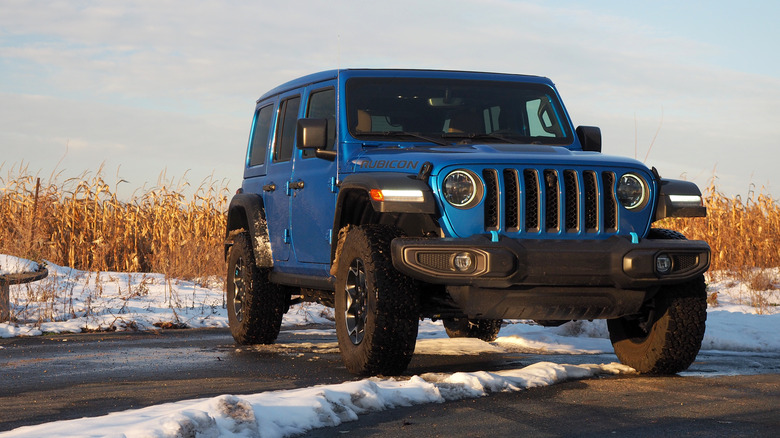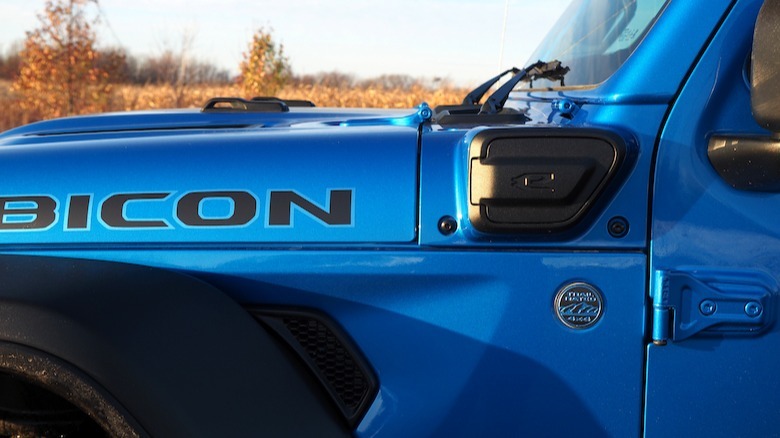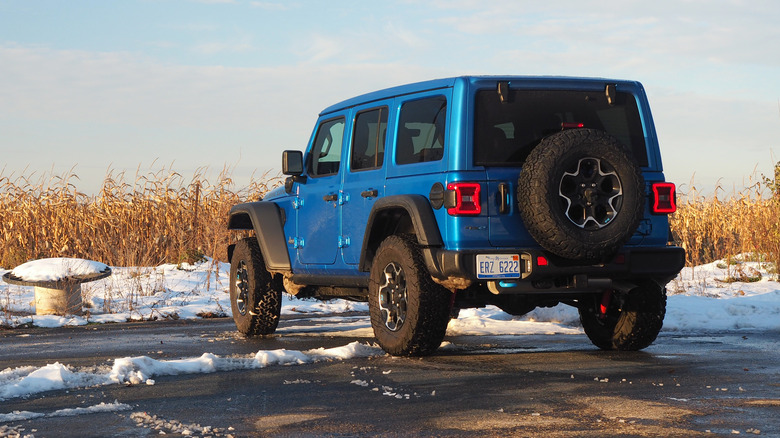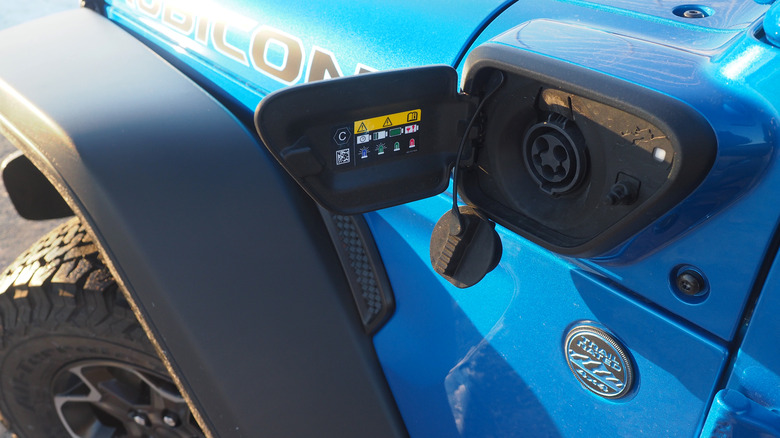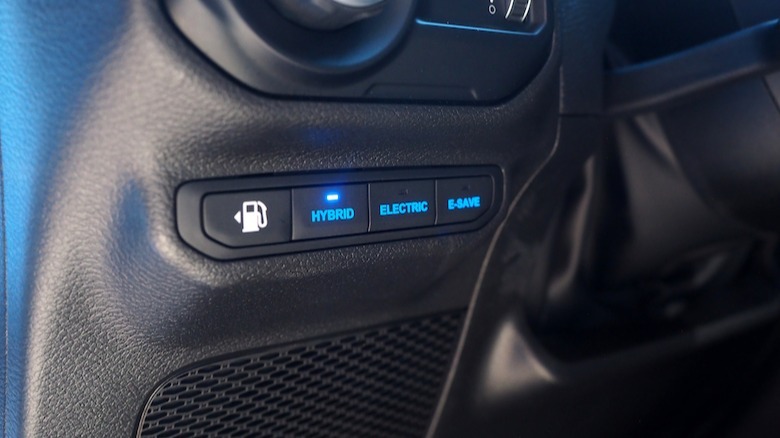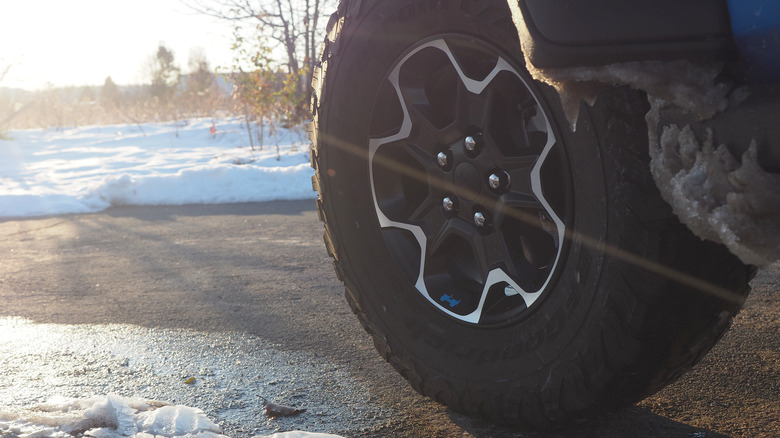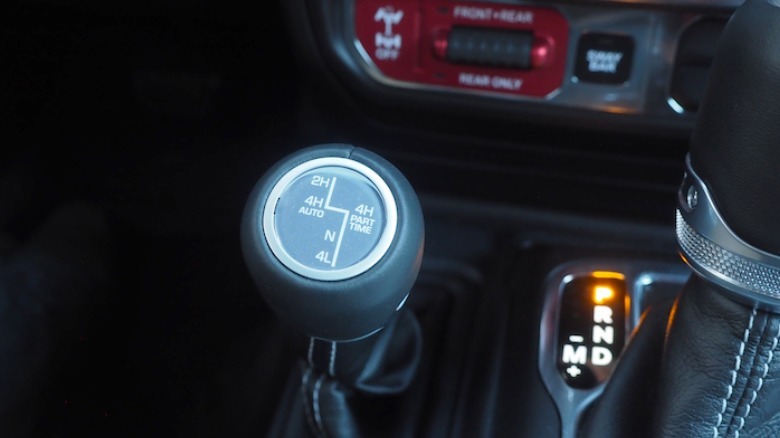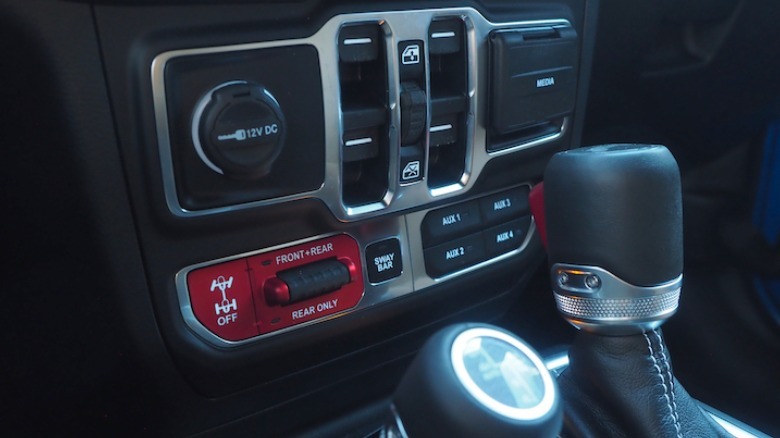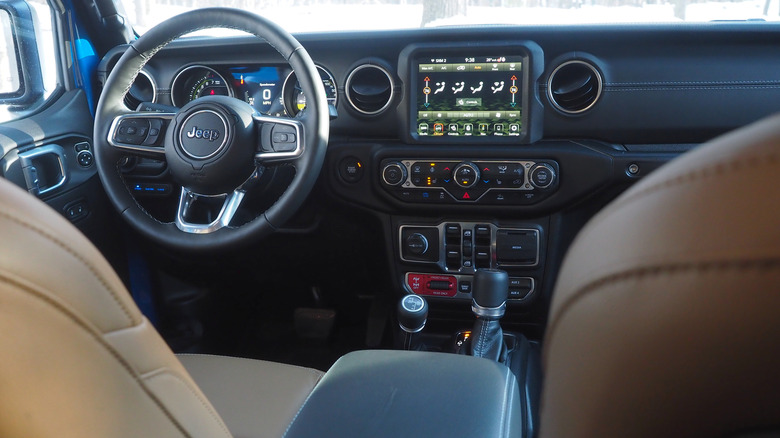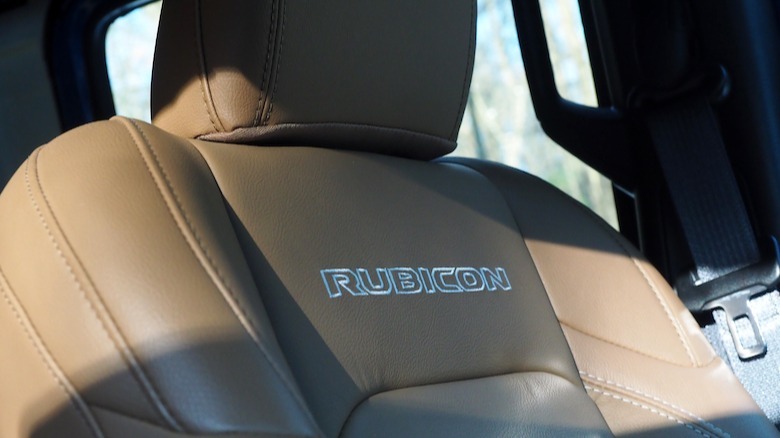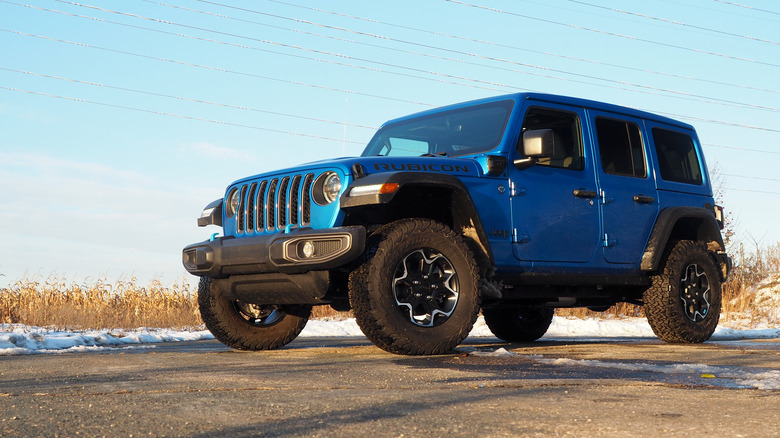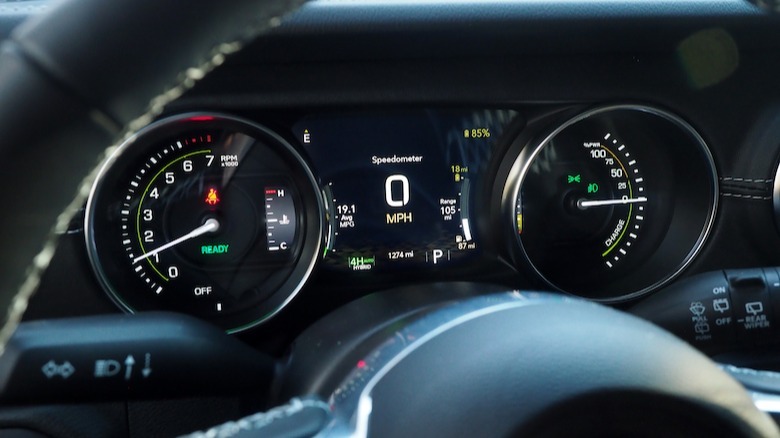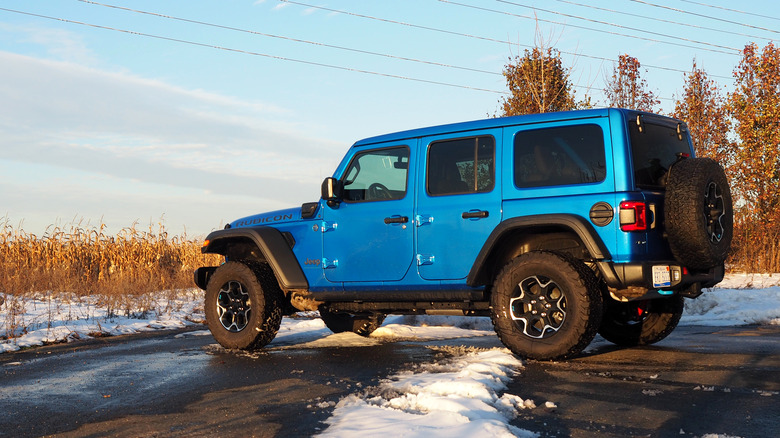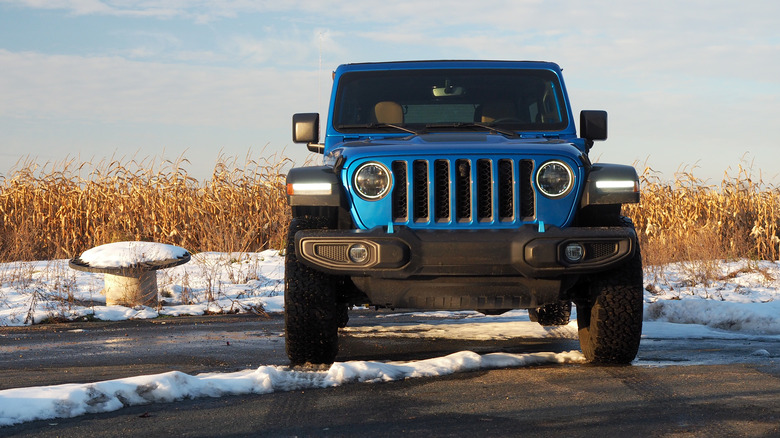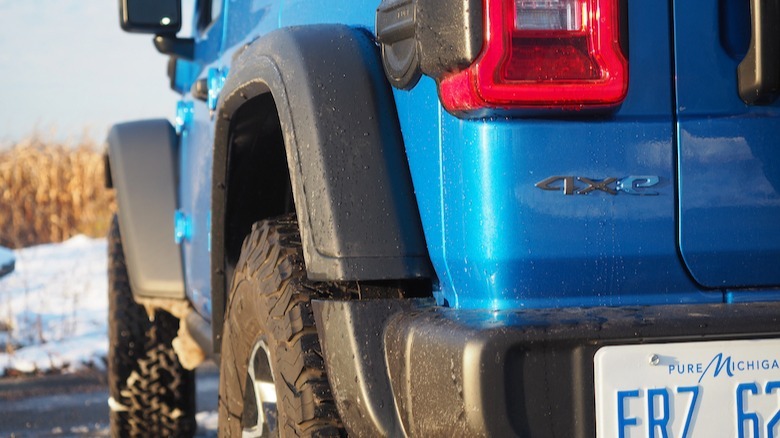2023 Jeep Wrangler 4xe Review: Hybrid SUV Offers Greener Go-Anywhere
- Plug-in hybrid doesn't sacrifice 4WD flexibility
- Fair electric-only range
- Rugged styling still turns heads
- Cabin isn't as big as you might think
- Road manners still underwhelm on the highway
You don't know you need it until you need it. That's the thing about trucks and SUVs: vehicles that have come to dominate sales in recent years, despite no shortage of criticism for being far, far more than most drivers require (and, frankly, than most urban areas can accommodate). Traditionally thirsty for fuel, they're often derided for being excessive and underutilized.
To shift the needle back, Jeep has been progressively electrifying its line-up of SUVs. We'll have to wait a while longer for the first all-electric Jeep models — they're due in 2024, in the shape of the Recon and Wrangler EVs — but there are now several plug-in hybrid versions offered under the 4xe brand.
The promise is, like PHEVs before, the emissions-free quiet of electric, with the reassurance and backup of a gas engine. You pay for that combination, mind: though the Wrangler 4xe starts at $54,735 (plus $1,795 destination), the Rubicon trim you see here kicks off at $60,980, and the flagship High Altitude at a whopping $63,015.
Rated for 21 miles on battery power alone, the Wrangler 4xe isn't going to give Tesla or Polestar any sleepless nights when it comes to EPA rankings. All the same, there's something to be said about having a proper SUV on the driveway.
Justifying your 4WD
Midwest weather is unpredictable. More than a foot of snow in the week ahead of Thanksgiving isn't normal, but that doesn't mean it won't happen. The wise driver has already swapped over to their winter tires (you are sporting winter rubber, right?) and doubled their estimates of stopping distances. Judging by the number of side-slipping sedans and trucks in ditches around me, the wise driver was also in the minority.
It's the sort of unexpected weather event that SUV owners love to point to, to justify their vehicle of choice. My issue with the Wrangler has always been that the compromises involved the remaining 95% of the time leave the American icon just that bit too frustrating for those who aren't fond of that particular Kool-Aid flavor.
A little shy in refinement, along with wobbly-to-vague steering, and the wisdom of a Wrangler daily driver starts to become questionable. The good news is, electrification makes the experience a whole lot better.
The greenest Wrangler is one of the most potent
Jeep's plug-in hybrid system takes a fairly straightforward approach. The gas part is a 2.0-liter turbocharged four-cylinder engine, paired with the first electric motor. That can contribute power, but also work as a generator to charge the battery from the gas engine.
The second electric motor is on the eight-speed transmission. It's responsible for both power and for the Wrangler 4xe's regenerative braking. Altogether you get 375 horsepower and 470 lb-ft, making this particular SUV one of the most potent Wranglers on offer.
The 17 kWh battery can be charged in around 2.5 hours on a Level 2 connection. There's no DC fast charging support — as is the case with a lot of PHEVs — with Jeep clearly assuming that most owners will be charging up when parked at home or at a workplace. Or, for that matter, at the trailhead: Jeep is installing chargers in out-of-the-way locations just for that purpose. Three buttons to the left of the steering wheel switch between the primary drive modes.
New drive modes, familiar flexibility
Hybrid is the default, the Wrangler 4xe making its own decisions around the blend of gas and electric power. Electric locks the SUV into battery power only, or at least for as long as you have a charge. Finally, E-Save leaves you driving on gas power only, reserving the battery's charge for later.
In the center console, meanwhile, there's a somewhat cryptic button that toggles between regular and high regen. When active, you get much more regenerative braking when you lift off the accelerator. Deactivated, and it behaves like a regular gas SUV. The good news is that it holds its setting even if you switch the Jeep off and on again; the downside is that you can't bring the Wrangler 4xe to a halt using regen alone, so don't expect one-pedal driving.
Otherwise, long-time Wrangler enthusiasts — or indeed truck drivers in general — won't find much to startle them in the 4xe's controls. There's a regular shifter for the standard eight-speed automatic, alongside a second shifter for moving between 2H, 4H Auto, 4H Part-Time, N, and 4L drive modes. In regular snow conditions, you'll probably want to stick to 4H Auto, which leaves the Wrangler to decide when to engage four-wheel drive depending on road conditions.
The Rubicon trim gets a glossy red panel of extra controls in the upright center console, to manage the front and rear locking differentials, and the sway bar. There are also four auxiliary buttons, which can be hooked up to accessories like light bars.
Open air, if you want it
In fact, barring some blue stitching to match the exterior trim, you'd be forgiven for forgetting you were in a hybrid at all. Jeep's analog gauges intersect with a color display showing things like battery and fuel status, range, and drive mode. There's a reasonably-sized 8.4-inch touchscreen in the center stack — running Uconnect 5 — and a bank of large, tactile buttons and knobs for the climate control underneath.
Jeep's infotainment UI feels a little cluttered, compared to the more streamlined interfaces of rivals, but it's fairly straightforward to navigate once you get used to it. You get Android Auto and Apple CarPlay support, with both USB-A and USB-C ports in multiple places.
You can, of course, whip off the doors and the soft-top roof — the former process requiring the included tool kit — and get your Wrangler 4xe ready for the Summer. Given the snow and ice, I figured it wasn't the right time of the year for that. Instead, I took full advantage of Jeep's potent seat heating, which gets up to temperature admirably quickly.
Electrification tempers some old-school dynamics
Some of my lingering criticisms of the Wrangler experience are carried over. It's loud on the highway, the fabric top and chunky wheels doing a middling job of keeping out wind and road noise from the cabin. That trademark twitchy steering is present and correct, too.
When in electric mode, though, it's surprisingly smooth and quiet. With the e-motors only contributing a total of 133 kW — or around 178 horsepower — it's obviously not the fastest EV around, but it's certainly enough for urban jaunts.
What's key, though, is how Jeep delivers the Wrangler 4xe's power. Regardless of whether you're in Hybrid, Electric, or E-Save mode, you still get all the 4-wheel-drive flexibility. That's a distinct difference from some rival PHEV SUVs, which can end up defaulting into 2WD mode if the battery runs flat.
It's not the only nod to "true" off-road use, either. The Wrangler's 31.5 inches of fording depth — courtesy of a sealed battery, among other things — mean this is a hybrid that isn't afraid of a little water.
Not quite a hefty hauler
Practicality off-road isn't quite carried over to interior space. At the moment, Jeep only offers the Wrangler 4xe as a four-door; if you want the two-door body, you'll need to stick with gas power alone. Even then, it's a fairly snug cabin in both rows.
Given the amount of snow that ended up coming in on my boots, though, the ruggedness of the Wrangler's straightforward interior had its charms. Drain holes mean washing down the footwells is made much more straightforward, and all of Jeep's plastics feel tough and sturdy.
The 27.7 cubic feet of trunk space expands to 67.4 cu-ft with the rear seats dropped down, but it's worth noting that they don't fold all the way flat. The Wrangler 4xe is rated to tow up to 3,500 pounds.
2023 Jeep Wrangler 4xe Verdict
The perennial appeal of SUVs like the Wrangler is undoubtedly down — in no small part — to reassurance. Having the confidence to venture out, regardless of whether the roads are snowy, muddy, waterlogged, or worse, is a huge psychological advantage. The fact that the Jeep looks pretty cool in the process is just icing on the cake.
What the Wrangler always felt like it compromised along the way was refinement the rest of the time. That challenge only became more noticeable with the arrival of the Ford Bronco, which has better manners on-road. The Wrangler 4xe shifts the balance again.
Long-time Wrangler drivers won't be surprised by the general on-road feel, but the plug-in hybrid drivetrain is solid and you don't sacrifice the core Jeep abilities in order to get that blast of electrification. It only serves to highlight the big, hybrid-shaped gap in the Bronco line-up, too. Electrification's instant torque, and the way it can be more precisely controlled, can make it far easier to navigate through tricky conditions on- or off-road.
The biggest downside is the price tag. This is an expensive SUV, particularly in burly Rubicon trim: at $60,980 plus destination, it's almost twice the price of a base, 4-door Wrangler. Nonetheless, its recipe of green usefulness makes it arguably the pick of the Wrangler range, for now, just assuming you can stomach the sticker price.
